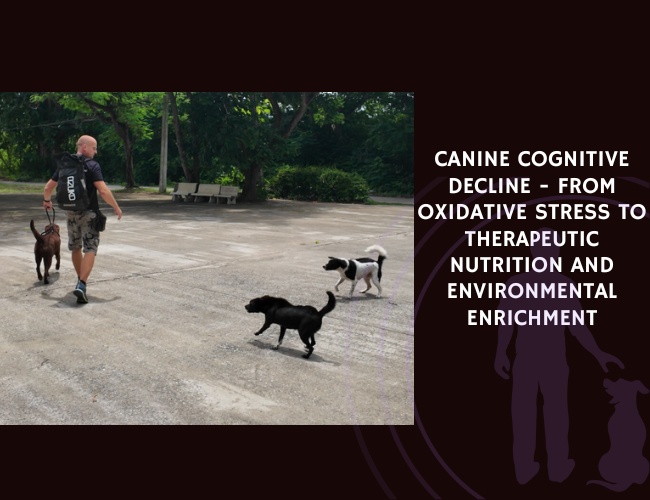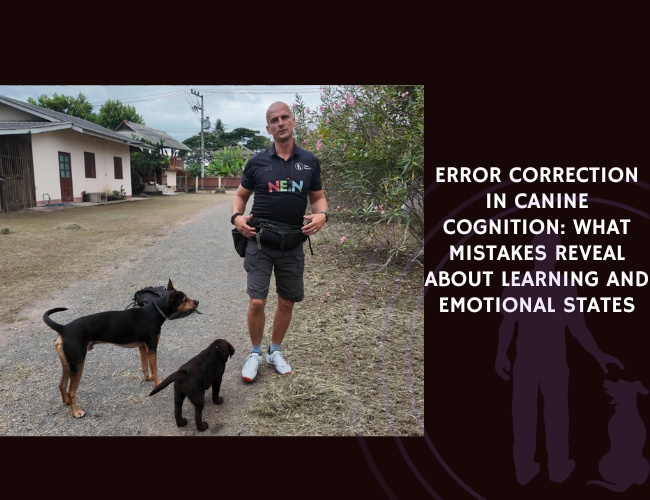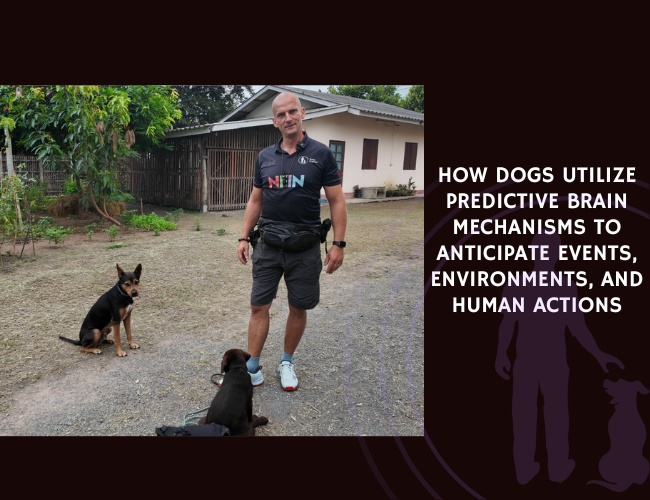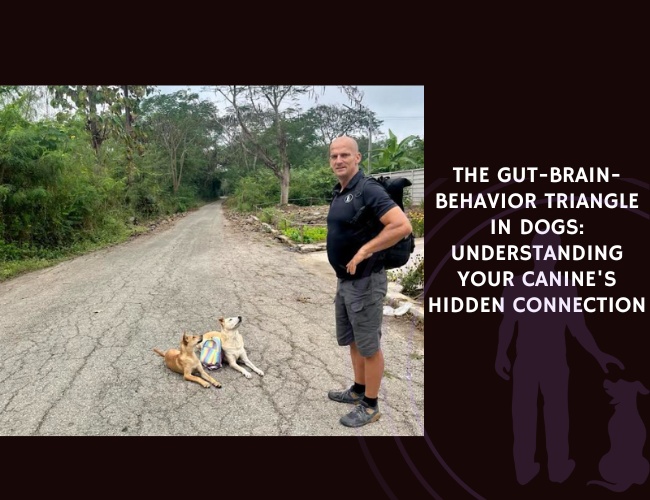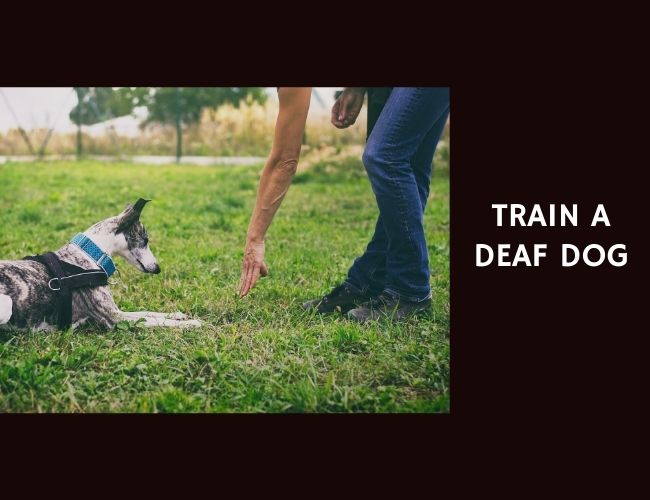Introduction: When Time Touches Our Faithful Companions
Watching your beloved dog age can be both beautiful and heartbreaking. That gray muzzle that once was jet black, those eyes that take a moment longer to recognize you in the morning – these changes tell a story of a life well-lived. But what happens when these normal signs of aging cross into something more concerning? When your sharp-as-a-tack companion starts getting confused in familiar places or forgets their favorite game?
Canine Cognitive Dysfunction (CCD), sometimes called “doggy dementia,” affects millions of aging dogs worldwide. Much like Alzheimer’s disease in humans, this progressive condition can transform your dog’s golden years into a challenging journey for both of you. Yet here’s what you need to know: while CCD cannot be cured, it can be managed, and understanding this condition is your first step toward giving your furry friend the best possible quality of life.
Did you know that dogs experiencing cognitive decline share remarkable similarities with humans facing Alzheimer’s? This connection has made our canine companions invaluable partners in understanding dementia – not just for their sake, but for ours too. Through what scientists call the “One Health” approach, research into canine cognitive decline is opening doors to better treatments for both species. Your aging dog isn’t just your best friend; they’re contributing to a greater understanding of brain health across species.
Character & Behavior: Recognizing the Changes in Your Aging Friend
The Subtle Shift in Daily Rhythms
You might notice it first in small ways. Your dog, who once bounded to the door at the jingle of keys, now seems to forget what that sound means. Or perhaps they’re pacing the hallways at 3 AM, seemingly lost in a house they’ve called home for years. These behavioral changes aren’t just “getting old” – they’re the brain’s way of signaling that something deeper is happening.
The progression typically unfolds like this:
- Early stages: Decreased enthusiasm for play, occasional confusion about routine commands
- Middle stages: Forgetting familiar routes on walks, changes in sleep patterns, decreased social interaction
- Advanced stages: Getting stuck in corners, not recognizing family members, loss of house-training
What makes this particularly heartbreaking is that your dog may seem perfectly healthy otherwise. Their body might be willing, but their mind is struggling to keep up. Research shows that in dogs aged 8 to 11 years, about 8% show signs of advanced cognitive dysfunction. By the time they reach 17 years or older, that number skyrockets to an astounding 80%.
Understanding the Emotional Landscape
Here’s something that might surprise you: dogs with cognitive decline often experience heightened anxiety and fear, particularly in the mild stages of the condition. Your once-confident companion might suddenly become clingy, following you from room to room like a shadow. This isn’t just seeking attention – it’s their way of anchoring themselves to something familiar in a world that’s becoming increasingly confusing.
Emotional changes you might observe:
- Increased dependency and need for reassurance
- Heightened sensitivity to pain or discomfort
- Reduced interest in activities they once loved
- Changes in their response to affection – either seeking more or withdrawing
The relationship between you and your dog becomes even more crucial during this time. While their cognitive abilities may be declining, their emotional connection to you remains a powerful anchor. This bond can actually be therapeutic – studies show that dogs who maintain strong social connections tend to have better outcomes when facing cognitive challenges. 🧡
Vocalization & Communication: How Your Dog’s “Voice” Changes
The Night-Time Symphony Nobody Asked For
One of the most distressing changes for both dogs and their humans is altered vocalization patterns. Your previously quiet companion might suddenly become quite the nighttime vocalist, barking or whining at seemingly nothing. This isn’t defiance or a behavior problem – it’s confusion and anxiety manifesting through the only voice they have.
Common vocalization changes include:
- Excessive barking, particularly at night
- Whining or crying when disoriented
- Changes in the tone or urgency of their vocalizations
- Decreased response to verbal commands they once knew well
These vocalizations often peak during “sundowning” – a phenomenon where confusion and anxiety worsen in the evening hours. Just like humans with dementia, dogs can experience this troubling pattern where the approaching darkness triggers increased restlessness and vocalization.
Learning to Speak Their New Language
As traditional communication breaks down, you’ll need to become fluent in a new form of dialogue with your dog. Body language becomes even more important than verbal cues. A gentle touch might communicate more effectively than calling their name. The warmth of your presence might calm them more than any command.
Pay attention to what triggers increased vocalization. Is it transitions between rooms? The onset of evening? Certain sounds or stimuli? Understanding these patterns helps you anticipate and address their needs before anxiety escalates. Remember, every vocalization is your dog trying to tell you something – even if they’re not quite sure what that something is themselves.
Training & Education: Adapting to a Changing Mind
The Science of “Old Dogs, New Tricks”
Despite the old saying, science tells us that aged dogs absolutely can learn new things – the brain’s neuroplasticity continues throughout life. However, the way they learn changes significantly. Your dog’s ability to pick up complex new behaviors may decline, but they can still benefit enormously from appropriate mental stimulation.
Key changes in learning ability:
- Slower acquisition of new information
- Difficulty with reversal learning (unlearning old patterns to learn new ones)
- Reduced problem-solving capabilities
- Maintained ability for simple, repetitive tasks
Research reveals something fascinating: dogs with early biomarker changes in their cerebrospinal fluid – before any visible symptoms appear – already show learning impairments in tasks like object discrimination. This means the brain is changing long before we see obvious signs, highlighting the importance of keeping our dogs mentally active throughout their lives.
Cognitive Exercises That Make a Difference
Think of cognitive training for your senior dog like physical therapy for the mind. The goal isn’t to teach complex new tricks but to maintain existing neural pathways and create gentle challenges that keep the brain engaged.
Effective cognitive exercises include:
- Simple puzzle feeders: Start with easy ones and keep them at a manageable difficulty level
- Hide and seek with treats: Using their nose engages multiple brain regions
- Modified versions of known commands: If “sit-stay-come” is too complex, break it into smaller parts
- Sensory games: Different textures, gentle sounds, and varied scents provide stimulation without frustration
The key is finding the sweet spot between challenge and frustration. If your dog becomes anxious or gives up quickly, the task is too difficult. Success should come with effort but not struggle. Remember, the goal is engagement and enjoyment, not perfection.
The Power of Routine in a Confused World
While mental stimulation is crucial, equally important is maintaining predictable routines. When the internal compass starts to fail, external structure becomes a lifeline. Keep meal times, walk times, and sleep schedules as consistent as possible. This predictability provides security in a world that’s becoming increasingly confusing for your dog.
Performance & Activities: Maintaining Quality of Life Through Movement
Physical Exercise: More Than Just Staying Fit
Exercise does more than keep muscles strong – it’s actually neuroprotective. High-intensity aerobic exercise (appropriate to your dog’s physical condition, of course) can influence cortical excitability and lead to cognitive improvement. But here’s the catch: as cognitive function declines, so does the motivation and ability to engage in physical activity.
Adaptive exercise strategies:
- Shorter, more frequent walks rather than long adventures
- Swimming or water therapy for low-impact movement
- Indoor obstacle courses using household items
- Gentle play sessions that don’t overwhelm
The beauty of exercise for dogs with CCD is that it addresses multiple concerns simultaneously. It helps maintain the sleep-wake cycle, reduces anxiety, provides sensory stimulation, and strengthens the human-animal bond. Even a slow, meandering “sniff walk” where your dog explores at their own pace provides valuable enrichment.
Environmental Enrichment: Creating a Brain-Friendly Home
Your home environment can either support or challenge a dog with cognitive decline. The goal is to create spaces that are both stimulating and safe, familiar yet interesting. This concept, called behavioral enrichment, has been proven to slow cognitive decline when combined with other interventions.
Enrichment strategies that work:
- Rotating toys: Keep a selection and rotate them weekly to maintain novelty
- Scent trails: Hide treats or use different pet-safe essential oils for olfactory stimulation
- Safe exploration zones: Create areas where your dog can investigate without getting stuck or lost
- Social enrichment: Controlled, calm interactions with familiar dogs or people
Studies show that dogs receiving behavioral enrichment combined with dietary support showed improved cognitive abilities and reduced brain pathology. It’s not just about keeping them busy – it’s about providing the right kind of stimulation that engages different brain regions without causing stress.

Nutritional Recommendations: Feeding the Aging Brain
The Antioxidant Revolution
The brain is particularly vulnerable to oxidative stress – imagine rust accumulating on the delicate machinery of thought. This is where antioxidants become your secret weapon. These powerful molecules work like a cleaning crew, neutralizing free radicals before they can damage neural tissue.
Key antioxidants for brain health:
- Vitamin E: Protects cell membranes from oxidative damage
- Vitamin C: Works synergistically with vitamin E
- Flavonoids: Found in fruits and vegetables, these compounds can actually cross the blood-brain barrier
- Selenium: Supports the body’s natural antioxidant systems
Research has shown remarkable results: dogs fed antioxidant-enriched diets showed improvements in learning ability and memory that lasted over three years. Within just weeks to months, owners reported increased affection, improved stamina, and better mental acuity. The key is starting early – think of it as investing in your dog’s cognitive retirement fund.
Medium-Chain Triglycerides: Alternative Brain Fuel
Here’s where nutrition gets really interesting. As the brain ages, its ability to use glucose for energy becomes impaired – it’s like trying to run a car on watered-down gasoline. Medium-chain triglycerides (MCTs) provide an alternative fuel source that the brain can readily use, even when glucose metabolism is compromised.
How MCTs support cognitive function:
- Rapidly converted to ketones, which the brain can use for energy
- Can improve cognitive function within 90 days of supplementation
- May help maintain gut health, which is increasingly linked to brain health
- Support neurite outgrowth, helping maintain neural connections
One groundbreaking study found that dogs receiving a diet with 6.5% MCT oil showed significant improvements in all six categories of CCD signs. That’s not just one aspect getting better – that’s comprehensive cognitive support. The beauty of MCTs is that they’re generally safe and well-tolerated, making them an excellent addition to a senior dog’s diet.
DHA: The Brain’s Building Block
Docosahexaenoic acid (DHA) isn’t just another supplement – it’s literally a structural component of brain cell membranes. Low levels of DHA have been linked to smaller hippocampal volumes (the brain’s memory center) and increased amyloid deposition, the hallmark of Alzheimer’s-type changes.
DHA’s cognitive benefits:
- Improves working memory and spatial recognition
- Reduces brain inflammation
- Supports neuroplasticity and neurogenesis
- May slow cognitive decline when combined with mental stimulation
What’s particularly exciting is that DHA supplementation in aged dogs has been shown to increase frontal lobe glutamate and glutamine – metabolites directly linked to cognitive function. It’s like giving the brain’s communication system a tune-up. The combination of DHA with cognitively stimulating activities appears to have a synergistic effect, suggesting that nutrition and enrichment work better together than alone.
Gentle. Steady. Present.
Time changes the map. As cognitive decline shifts your dog’s sense of familiarity, once-simple routines may become sources of confusion. Meeting these changes with patience and predictable structure helps preserve their comfort and dignity.
Emotion anchors the mind. Even as memory fades, your dog’s bond with you remains a stabilising force. Consistent reassurance and gentle interaction can calm fear and maintain trust in an increasingly uncertain world.
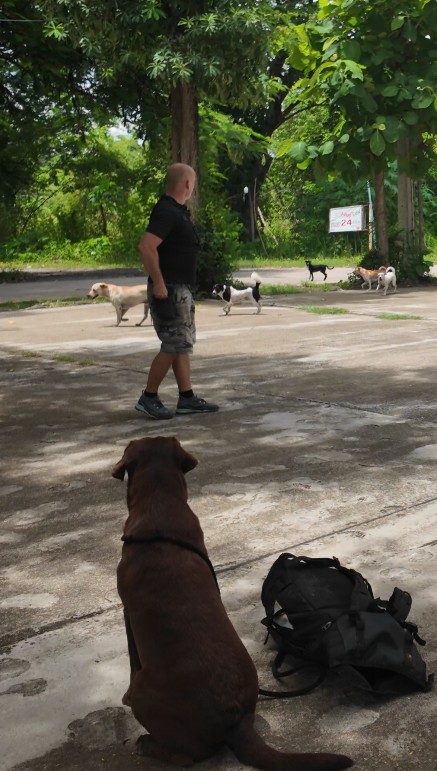
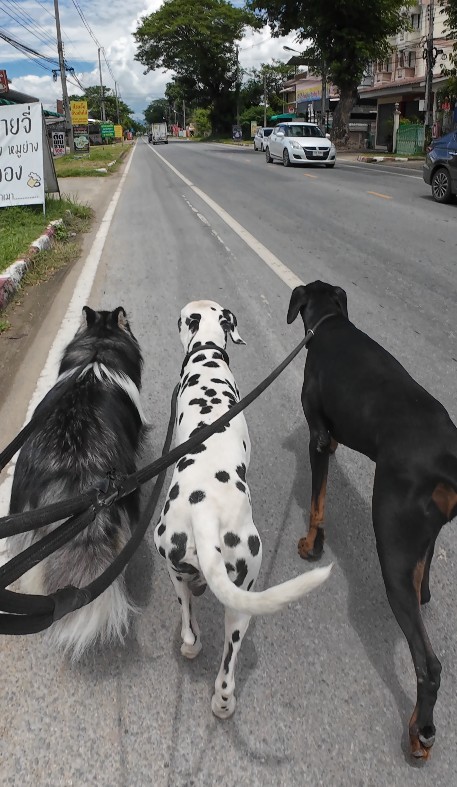
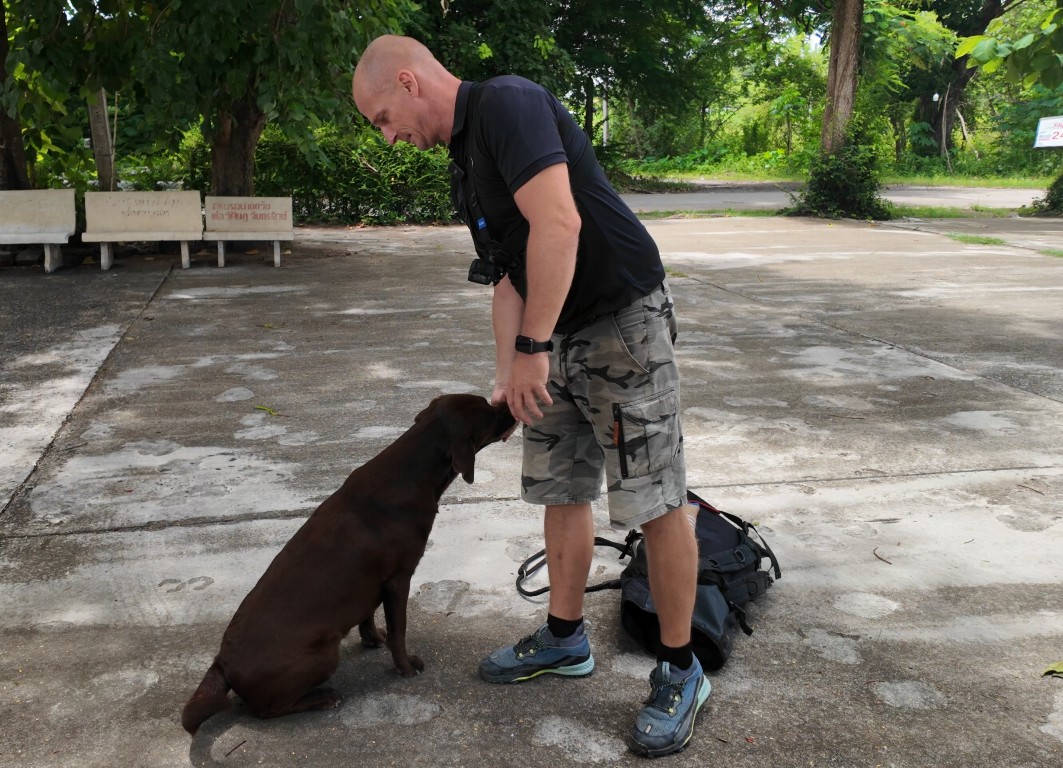
Adaptation keeps connection alive. By simplifying cues, slowing the pace, and focusing on repetitive, confidence-building exercises, you nurture mental engagement while honouring the abilities your senior dog still holds.
The Power of Combined Nutritional Approaches
The real magic happens when these nutritional interventions work together. Think of it as a cognitive support team where each member has a specific role:
- Antioxidants protect existing neural tissue
- MCTs provide immediate alternative energy
- DHA supports long-term brain structure and function
This multi-targeted approach consistently outperforms single interventions. It’s not about finding the one magic bullet – it’s about supporting brain health from every angle. 🐾
Health Concerns: Understanding the Medical Side of Cognitive Decline
The Brain Under the Microscope
Understanding what’s happening inside your dog’s brain can help you appreciate why certain symptoms occur and why specific treatments work. The changes mirror those seen in human Alzheimer’s disease with remarkable similarity.
Key brain changes in CCD:
- Amyloid-beta accumulation: These protein deposits interfere with neural communication
- Tau protein tangles: Disrupted transport systems within brain cells
- Brain atrophy: Particularly in the hippocampus and areas crucial for memory
- Inflammation: Activated immune cells in the brain contribute to ongoing damage
- Blood-brain barrier dysfunction: The brain’s protective barrier becomes leaky
These changes don’t happen overnight. By the time you notice behavioral symptoms, the brain has likely been undergoing these changes for months or even years. This is why prevention and early intervention are so crucial.
Diagnostic Challenges and Breakthroughs
Currently, diagnosing CCD relies heavily on behavioral observations and ruling out other medical conditions. Your veterinarian might use standardized questionnaires like the Canine Dementia Scale (CADES) or Canine Cognitive Assessment Scale (CCAS) to evaluate your dog’s cognitive status.
The diagnostic process typically includes:
- Comprehensive behavioral history
- Physical and neurological examination
- Blood work to rule out metabolic causes
- Sometimes advanced imaging like MRI to visualize brain changes
Exciting developments are on the horizon. Researchers are working on blood biomarkers that could detect CCD before symptoms appear. Wearable technologies that track activity patterns and sleep cycles may soon help identify early cognitive changes. Imagine your dog’s collar alerting you to cognitive changes before you even notice them!
Managing Comorbidities
CCD rarely travels alone. Many senior dogs face multiple health challenges that can complicate cognitive symptoms or accelerate decline.
Common comorbidities to monitor:
- Sensory decline: Vision and hearing loss can worsen disorientation
- Arthritis: Pain can affect sleep and increase anxiety
- Metabolic disorders: Conditions like hypothyroidism can mimic or worsen cognitive symptoms
- Epilepsy: Dogs with seizures may show accelerated cognitive decline
Managing these conditions holistically is essential. Treating pain from arthritis might improve sleep, which in turn supports cognitive function. It’s all interconnected, and addressing one issue often helps others.

Lifestyle & Environment: Creating a Dementia-Friendly Home
Adapting Your Space for Success
Your home, once perfectly suited to your dog’s needs, may now present challenges you never considered. Simple modifications can make a world of difference in your dog’s ability to navigate their environment confidently.
Essential home modifications:
- Night lights: Place them along common pathways to reduce disorientation in darkness
- Non-slip surfaces: Add rugs or yoga mats to provide traction on slippery floors
- Baby gates: Prevent access to stairs or confusing areas
- Simplified layouts: Remove unnecessary furniture that creates maze-like pathways
- Comfort stations: Multiple water bowls and easily accessible resting spots
Think of your home through your dog’s confused perspective. That doorway they’ve passed through thousands of times might suddenly seem like a barrier. The goal is to remove obstacles – both physical and cognitive – that could cause frustration or anxiety.
The Importance of Predictability
In a world where internal navigation is failing, external cues become crucial. Consistency in your dog’s environment provides the scaffolding their brain needs to function.
Strategies for maintaining predictability:
- Keep furniture in the same position
- Maintain consistent locations for food, water, and bedding
- Use verbal cues paired with physical guidance
- Create visual markers (different colored mats) for important locations
- Establish and maintain strict routines for daily activities
Some owners find success using different scents to mark different areas – lavender near the sleeping area, vanilla near the food station. These olfactory cues can help orient a confused dog when visual and spatial processing fails.
Social Considerations
Social dynamics often change with cognitive decline. Your dog might become more dependent on you while simultaneously showing less interest in other pets or people. This isn’t antisocial behavior – it’s conservation of limited cognitive resources.
Managing social interactions:
- Limit exposure to unfamiliar people or animals
- Supervise interactions with other household pets
- Provide escape routes during social situations
- Recognize that decreased sociability is part of the disease
- Focus on quality over quantity in social experiences
Remember, your presence is often the most comforting thing for a dog with CCD. Simply being near them, offering gentle touch and a calm voice, provides immeasurable comfort in their increasingly confusing world.
Senior Care: Navigating the Golden Years with Grace
The Art of Compassionate Observation
Caring for a dog with cognitive decline requires you to become a detective of subtle changes. Keeping a journal can help you track patterns and identify what interventions are working.
What to track:
- Sleep patterns and nighttime activity
- Appetite and eating habits
- Bathroom accidents and their timing
- Episodes of confusion or disorientation
- Response to medications or supplements
- Good days versus difficult days
This information becomes invaluable when working with your veterinarian to adjust treatment plans. It also helps you recognize when your dog is having a particularly good day – perfect for a special treat or gentle adventure.
Quality of Life Considerations
This is perhaps the hardest part of the journey. How do you measure quality of life when your dog can’t tell you how they feel? The key is looking at the whole picture, not just the cognitive symptoms.
Quality of life indicators:
- Appetite and enjoyment of food: Are meal times still pleasurable?
- Comfort: Is pain well-managed? Can they rest peacefully?
- Engagement: Do they still have moments of interest or joy?
- Dignity: Can they maintain basic functions with assistance?
- Connection: Do they still seek or accept comfort from you?
There’s no perfect formula, but many veterinarians recommend the “Rule of 5 Good Things.” List five things your dog loves. When they can no longer enjoy at least three of them, it may be time for difficult conversations about end-of-life care.
The Caregiver’s Journey
Caring for a dog with CCD is emotionally and physically demanding. You might experience grief even while your dog is still alive – this is called anticipatory grief, and it’s completely normal. You’re mourning the loss of the dog they used to be while caring for the dog they are now.
Self-care strategies for caregivers:
- Accept help from friends and family
- Consider respite care or dog-sitting services
- Join online support groups for pet parents dealing with CCD
- Maintain your own routines and activities
- Remember that feeling frustrated or exhausted doesn’t make you a bad pet parent
Your wellbeing directly impacts your ability to care for your dog. Taking breaks and seeking support isn’t selfish – it’s necessary for sustainable caregiving.
Working with Your Veterinary Team
Your veterinarian is your partner in this journey. Regular check-ups become even more important as CCD progresses, typically every 3-6 months.
Maximizing veterinary visits:
- Bring your symptom journal
- Ask about new treatments or clinical trials
- Discuss pain management options
- Review all medications and supplements
- Don’t hesitate to ask about quality of life
Some veterinarians specialize in senior pet care or hospice/palliative care. These specialists can provide additional support and resources tailored to your dog’s specific needs.
Breed Considerations: Understanding Individual Risk Factors
Breed-Specific Vulnerabilities
While CCD can affect any dog, certain breeds may be at higher risk or show different patterns of cognitive decline. Just as genetics influence Alzheimer’s risk in humans, breed genetics play a role in canine cognitive health.
Factors that may influence breed risk:
- Lifespan (longer-lived breeds have more opportunity to develop CCD)
- Genetic predispositions to neurological conditions
- Breed-specific health issues that may accelerate cognitive decline
- Size (some studies suggest smaller breeds may show symptoms earlier)
Understanding your breed’s specific risks helps you be proactive about cognitive health. If you have a breed prone to cognitive issues, starting preventive measures early – like enrichment activities and brain-healthy nutrition – becomes even more important.
The Individual Dog
Remember, breed is just one factor. Your dog’s individual genetics, life experiences, health history, and environment all influence their cognitive aging journey. Two dogs of the same breed can have vastly different experiences with CCD.
What matters most is knowing your individual dog – their personality, preferences, and patterns. You are the expert on your dog, and your observations are invaluable in managing their care.
Conclusion: Is Your Dog’s Journey With CCD Your Journey Too?
If you’ve read this far, you’re likely facing or anticipating the challenges of canine cognitive decline. Perhaps you’ve noticed subtle changes in your faithful companion, or maybe you’re being proactive about their cognitive health. Either way, you’re not alone in this journey.
Canine Cognitive Dysfunction is a complex condition that challenges us to reimagine our relationship with our aging dogs. It asks us to become more patient, more observant, and more creative in how we provide care. It teaches us that love isn’t just about the joyful moments – it’s about showing up for the difficult ones too.
The science is clear: while we cannot cure CCD, we can significantly impact its progression and our dogs’ quality of life. Through a combination of nutritional support (those powerful antioxidants, MCTs, and DHA), environmental enrichment, appropriate medical management, and most importantly, your unwavering presence and love, dogs with CCD can continue to experience joy and comfort in their golden years.
Your action plan moving forward:
- Start with a veterinary consultation to establish a baseline
- Implement dietary changes gradually, introducing brain-supportive nutrients
- Create an enrichment plan suited to your dog’s current abilities
- Modify your home environment to support success
- Build your support network – you don’t have to do this alone
Remember, every small improvement matters. A better night’s sleep, a moment of recognition, a tail wag at dinner time – these victories might seem small, but they’re everything to your dog and to you.
Your aging dog has given you years of unconditional love, countless memories, and immeasurable joy. Now, as their mind begins to wander, your role shifts from companion to guardian, from playmate to caregiver. It’s not the journey any of us would choose, but it’s one that deepens our understanding of what it truly means to love.
In the end, perhaps the most profound gift of caring for a dog with CCD is what it teaches us about presence. In a world where their past is fading and their future is uncertain, dogs with cognitive decline live entirely in the moment. And in that moment, what matters most is that you’re there, offering comfort, safety, and love.
Your dog may not remember what you did for them yesterday, and they may not recognize you tomorrow. But right now, in this moment, they know they are loved. And that, perhaps, is enough. 🧡

